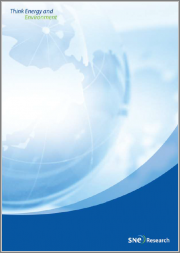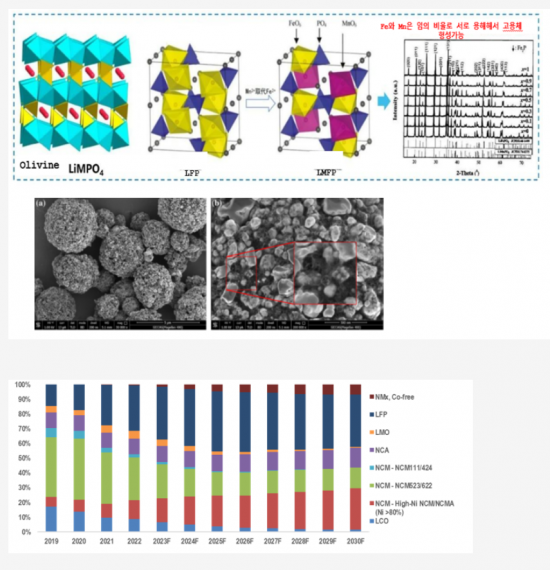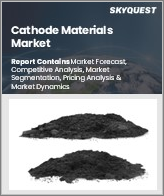
|
시장보고서
상품코드
1356951
<2023> 리튬이차전지 리튬인산철(LFP) 양극소재 기술현황 및 시장전망<2023> LFP Cathode Materials for Lithium-Ion Secondary Batteries: Status and Market Outlook |
||||||
2021년은 중국의 리튬인산철(LFP, LiFePO4) 배터리에 대한 관심이 폭발한 한해였고 그 추세는 2023년 상반기까지 강하게 상승하고 있습니다.
전기차에서 탑재되는 LFP 배터리의 비중도 2020년 17%에서 2021년 27%, 2022년 36%까지 증가하였습니다.
중국에서 판매된 LFP 배터리 탑재 전기차의 비중은 2020년 9월 이후 NCM(니켈·코발트·망간) 혹은 NCA(니켈·코발트·알루미늄) 등 삼원계 배터리의 비중을 뛰어넘었습니다.
현재 LFP배터리의 대부분은 중국 업체들이 생산하고 있는데 테슬라뿐 아니라 폭스바겐, 포드, 스텔란티스 등도 LFP배터리에 관심을 보이고 있습니다.
리튬이차전지가 대용량화됨에 따라 리튬이차전지의 가격 및 안전성 강화가 중요한 화두로 떠오르고 있습니다.
이러한 흐름 속에서 이미 개발된 지 많은 시간이 지난 리튬인산철 전지가 새 화두로 떠오르고 있는데 이는 코발트를 사용하지 않아 상대적으로 저가에 제조가 가능하며, 고온 및 과충전 상태에서도 구조붕괴가 일어나지 않아 수명 및 안전성이 우수하며, 또한 리튬인산철에 관한 핵심특허가 22년 대부분 만료되어 특허료의 지불이나 특허침해에 대한 위험이 없이 판매가 가능해질 것이기 때문입니다.
리튬인산철 이차전지의 특성 및 장단점을 이해하기 위해서는 리튬이차전지에 관한 체계적인 지식, 정보 및 리튬인산철 양극재의 장점 및 한계에 관한 지식을 습득할 필요가 있으며, 이를 바탕으로 향후 리튬인산철 이차전지의 개발 방향을 이해할 수 있을 것으로 보입니다.
현재 리튬 인산철 배터리는 400km 가량의 항속거리의 달성이 가능하며, 실제 리튬인산철 양극소재가 적용된 테슬라 2021년 모델3의 경우 주행거리가 407 km에 달합니다.
또한 저가인 철 사용으로 가격 면에서도 우위에 있으며, 최근 코발트, 니켈 등의 삼원계용 원자재의 가격 폭등으로 이러한 가격적인 장점은 더 커지고 있습니다.
또한 안전성에 있어서도 300도의 고온과 260% 과충전에도 화재나 폭발반응이 일어나지 않는 등 층상구조의 삼원계 대비 올리빈 구조의 리튬인산철 소재가 이점을 가지고 있어 배터리 업체나 완성차 업체에서 안전사고를 대비할 충당금을 비축할 필요가 없는 이점을 가지고 있습니다.
아직 해결해야 할 과제가 많이 남아있으나, Bulk 리튬인산철에 대한 성능구현, Graphene과의 효과적인 복합화, LiMnPO4 등의 성능구현이 이루어진다면 올리빈 리튬인산철에 있어서 또한번의 진전이 가능할 것으로 생각됩니다.
최근 망간을 혼합한 LMFP 배터리는 이런 한계를 극복할 수 있는 신기술로 주목받고 있습니다.
비슷한 가격으로도 에너지 밀도를 15-20%가량 높일 수 있습니다. CATL과 BYD, 궈시안 등 중국 업체들도 유사한 기술을 적용한 LMFP 기반 배터리를 개발해 상용화 단계에 들어섰습니다
본 리포트에서는 리튬이차전지의 양극소재 종류 및 특징을 살펴보고, 특히 최근 화두로 떠오르고 있는 리튬인산철(LFP, LMFP) 양극소재에 대한 특성을 자세히 살펴보고, 개발 현황 및 제조 공정 기술에 대하여 상세히 고찰하고자 합니다.
여기에 리튬인산철(LFP, LMFP) 양극소재 시장에 대한 전망과 주요 업체 정보에 대하여 정리하였으며, 리튬인산철(LFP, LMFP) 적용 완성차 업체와 배터리 업체 현황에 대하여도 다루었습니다.
본 보고서의 Strong Point는
- ① 리튬인산철 및 리튬이차전지 양극소재 종류 및 특징에 대한 상세 설명
- ② 리튬인산철 소재와 삼원계 소재에 대한 기술적 특징 비교 분석
- ③ 리튬인산철 제조 공정 및 최신 기술개발 동향에 대한 정리
- ④ 주요 업체별 리튬인산철 생산능력 및 사용전망 (약 50여개업체)
- ⑤ 리튬인산철 소재 시장에 진출하거나 신규 스터디를 하고자하는 업체 또는 개인에게 용이
목차
리포트 개요
<2023년판> 리튬이차전지 리튬인산철(LFP) 양극소재 기술현황 및 시장전망
1. 리튬이차전지 개요
- 1-1. 리튬이차전지 역사
- 1-2. 리튬이차전지 종류 및 특징
- 1-3. 리튬이차전지 원리
- 1-4. 리튬이차전지 구성요소
- 1-5. 리튬이차전지 응용분야
2. 리튬이차전지 양극소재 종류 및 특징
- 2-1. 리튬이차전지 양극소재 결정구조 및 특성
- 2-2. 산화물계 양극소재 구조 및 전기화학적 특성
- 2-2-1. 층상구조 산화물 (layered oxide)
- 2-2-2. 리튬-망간 과잉 산화물 (Li and Mn-rich oxide)
- 2-2-3. Disordered Rock-Salt 산화물
- 2-2-4. 스피넬 구조 산화물 (Spinel Oxides)
- 2-3. Polyanion계 양극소재 구조 및 전기화학적 특성
- 2-3-1. 올리빈 구조 인산화물(Olivine-type polyanion oxide)
- 2-3-2. 기타 Polyanion계 양극활물질
3. 리튬인산철계(LFP/LMFP) 양극소재 기술개발 현황
- 3-1. 리튬인산철 양극소재 개발 방향
- 3-2. 리튬인산철 양극소재 개발 이력
- 3-3. 리튬인산철 양극소재 기본 특성
- 3-3-1. 결정 구조
- 3-3-2. 충방전시의 리튬 이동 및 상변화 메커니즘
- 3-3-3. 전기 전도도
- 3-3-4. 구조내 결함
- 3-3-5. 에너지 밀도
- 3-3-6. 온도 의존성
- 3-3-7. 수명 특성
- 3-4. 리튬인산철 양극소재 제조 공정
- 3-4-1. 합성법
- 3-4-2. 합성원료및열처리
- 3-4-3. 인산철전구체의제조공예 [LFP precursor]
- 3-5. 리튬인산철 양극소재 기술개발 동향
- 3-5-1. 입자 형상 제어
- 3-5-2. 카본계열 복합화
- 3-5-3. 도핑
- 3-5-4. 망간치환을 통한 에너지밀도 증가 (LMFP)
- 3-5-5. 기타 올리빈계 양극소재 기술개발 동향
- ① LiMnPO4 (LMP) ② LiCoPO4, LiNiPO4 (LCP, LNP)
- 3-6. 리튬인산철(LMFP) 양극소재 기술개발 동향
- 3-6-1. LMFP 양극소재의 연구배경
- 3-6-2. LMFP양극소재의 제조방법
- 3-6-3. LMFP양극소재의 성능개선전략
- 3-6-4. LMFP양극소재의 총결과 전망
- 3-7. 리튬인산철 양극소재의 향후 연구 및 개발 방향 전망
4. 리튬인산철 양극소재 시장 및 업체 현황
- 4-1. 리튬인산철 적용 이차전지 시장 현황
- 4-2. 리튬인산철 양극소재 주요 생산 업체 현황
- 4-2-1. Dynanonic
- 4-2-2. Guoxuan(Gotion)
- 4-2-3. BTR(Lopal)
- 4-2-4. Hunan Yuneng
- 4-2-5. Hubei Wanrun
- 4-2-6. BYD
- 4-2-7. Chongqing Terui
- 4-2-8. Pulead
- 4-2-9. Anda
- 4-2-10. Johnson Matthey
- 4-2-11. Tianjin STL
- 4-2-12. Valence
- 4-2-13. RT Hi-Tech
- 4-2-14. Changzhou Liyuan
- 4-2-15. Shandong Fengyuan
- 4-2-16. Chengdu Jintang Shidai
- 4-2-17. YOUSHAN TECHNOLOGY
- 4-2-18. HEFEI YOUNGY ENERGY MATERIALS CO.,LTD.
- 4-2-19. Sichuan Langsheng New Energy Technology Co., Ltd.
- 4-2-20. Hunan Pengbo New Materials
- 4-2-21. Fujian Zijin Liyuan
- 4-2-22. Jiangxi Zhili Technology
- 4-2-23. Xiexin Lidian
- 4-2-24. Others
- (Shenghua(Fulin PM), Annada, CNNC, Yunxiang, KTC, Haichuang New Energy, Zhongtian Xingcai Cylico, Yunnan Yeyang, Deyang Weixu, Xiamen Xingrong, Yibin Tianyuan, Wanhua Chemical,CALB, Bangsheng New Energy, Tinci, BASF, Dupont, Aleees, Tatung, Formosa, CAEC, ONE, RFsemi, Zaigle, KPS)
- 4-3. 리튬인산철 적용 완성차 업체 현황
- 4-4. 리튬인산철 적용 배터리 업체 현황
5. 참고 문헌
The year 2021 was a year of explosive interest in lithium iron phosphate (LFP, LiFePO4) batteries in China, and the trend has been strong through the first half of 2023. The share of LFP batteries in electric vehicles also increased from 17% in 2020 to 27% in 2021 and 36% in 2022.
The share of LFP battery-powered electric vehicles sold in China has surpassed the share of NCM (nickel-cobalt-manganese) or NCA (nickel-cobalt-aluminum) batteries since September 2020.
Currently, most LFP batteries are produced by Chinese companies, but Tesla, as well as Volkswagen, Ford, and Stellantis, are also showing interest in LFP batteries.
Lithium iron phosphate (LiFePO4) batteries are gaining attention for large-scale applications due to their cost-effectiveness, safety, and extended service life. Unlike traditional lithium-ion batteries, LiFePO4 batteries can be produced inexpensively without using cobalt. They exhibit robust safety features, maintaining performance even in high temperatures and during overcharging. Furthermore, the expiration of key patents around 2022 eliminates concerns about patent fees or infringement risks, paving the way for broader adoption. To grasp the characteristics, advantages, and disadvantages of lithium iron phosphate (LiFePO4) secondary batteries, a comprehensive understanding of lithium-ion batteries and insights into the strengths and limitations of LiFePO4 cathode materials is crucial. This knowledge forms the foundation for anticipating the future development direction of LiFePO4 secondary batteries.
Lithium iron phosphate batteries, like the ones in the 2021 Tesla Model 3, currently offer a range of about 400 kilometers, with the Model 3 achieving 407 kilometers. Their cost advantage, stemming from the use of inexpensive iron, is amplified amid rising prices of raw materials for ternary systems like cobalt and nickel. The safety edge of lithium iron phosphate, with its olivine structure, is evident in its resistance to fire or explosion reactions even at 300 degrees Celsius and 260% overcharging. This characteristic eliminates the need for contingency funds to address safety incidents, benefiting battery companies and automakers.
Although there are still many challenges to be addressed, it is thought that another breakthrough in olivine lithium iron phosphate is possible if the performance of bulk lithium iron phosphate, effective compounding with graphene, and the performance of LiMnPO4 are realized.
Recently, LMFP batteries with manganese mixed have been attracting attention as a new technology that can overcome these limitations. The energy density can be increased by about 15-20% at a similar price. Chinese companies such as CATL, BYD, and Guoxuan have also developed LMFP-based batteries with similar technologies and entered the commercialization stage.
This report delves into the types and traits of lithium-ion battery cathode materials, focusing on the noteworthy lithium iron phosphate (LFP, LMFP) cathodes. We will provide a detailed examination of their characteristics, alongside a discussion on development status and manufacturing processes. Moreover, this report explores the market outlook and major companies in lithium iron phosphate (LFP, LMFP) cathode materials, providing insights into the current status of LFP-equipped automakers and battery companies.

The strong point of this report is:
- 1. Detailed explanation of the types and characteristics of lithium iron phosphate and lithium-ion battery cathode materials
- 2.Technical feature comparison analysis between lithium iron phosphate material and ternary materials
- 3. Summary of the manufacturing process of lithium iron phosphate and the latest trends in technological development
- 4.Lithium iron phosphate production capacity and usage prospects for major companies (approximately 50 companies)
- 5. Beneficial for companies or individuals looking to enter or conduct new studies in the lithium iron phosphate material market
Table of Contents
1. Lithium-ion Battery Overview
- 1-1. History of Li-ion Batteries
- 1-2. Li-ion Battery Types and Features
- 1-3. The Operating Principle of Li-ion Batteries
- 1-4. Li-ion Battery Components
- 1-5. Applications of lithium-ion Batteries
2. Types and Characteristics of Lithium-ion Battery Cathode Materials
- 2-1. Structure and Properties of Li-ion Battery Cathode Materials
- 2-2. Oxide-based Cathode Material Structure and Electrochemical Properties
- 2-2-1. Layered Oxide
- 2-2-2. Li and Mn-rich Oxide
- 2-2-3. Disordered Rock-Salt Oxides
- 2-2-4. Spinel Oxides
- 2.3. Structure and Electrochemical Properties of Polyanion-based Cathode Materials
- 2.3.1. Olivine-type Polyanion Oxide
- 2.3.2. Other Polyanion-Based Cathode Active Materials
3. Status of the development of lithium iron phosphate (LFP/LMFP) cathode materials
- 3-1. Directions for the development of LFP/LMFP cathode materials
- 3-2. Development history of LFP/LMFP cathode materials
- 3-3. Basic characteristics of LFP/LMFP cathode materials
- 3-3-1. Crystal Structure
- 3-3-2. Lithium migration and phase change mechanism during charge and discharge
- 3-3-3. Electrical Conductivity
- 3-3-4. Defects in the Structure
- 3-3-5. Energy Density
- 3-3-6. Temperature dependence
- 3-3-7. Lifetime Characteristics
- 3-4. LFP cathode material manufacturing process
- 3-4-1. Synthesis
- 3-4-2. Synthesis Materials and Heat Treatment
- 3-4-3. Manufacturing Process of LFP precursor
- 3-5. Trends in the development of LFP based cathode materials
- 3-5-1. Controlling Particle Shape
- 3-5-2. Carbon-based composites
- 3-5-3. Doping
- 3-5-4. Increase in Energy Density through Manganese Substitution (LMFP)
- 3-5-5. Other Olivine-based cathode material technology development trends
- 1. LiMnPO4 (LMP)
- 2. LiCoPO4, LiNiPO4 (LCP, LNP)
- 3-6. Technological Developments in Lithium Iron Phosphate (LMFP) Cathode Materials
- 3-6-1. Background of LMFP cathode material research
- 3-6-2. LMFP cathode material manufacturing method
- 3-6-3. Performance improvement strategy for LMFP cathode materials
- 3-6-4. Overall Results and Outlook for LMFP Cathode Materials
- 3-7. Future Research and Development Directions for LFP Cathode Materials
4. LFP Market and Company Status
- 4-1. LFP-based secondary battery market status
- 4-2. Major LFP Cathode Material Producers
- 4-2-1. Dynanonic
- 4-2-2. Guoxuan(Gotion)
- 4-2-3. BTR(Lopal)
- 4-2-4. Hunan Yuneng
- 4-2-5. Hubei Wanrun
- 4-2-6. BYD
- 4-2-7. Chongqing Terui
- 4-2-8. Pulead
- 4-2-9. Anda
- 4-2-10. Johnson Matthey
- 4-2-11. Tianjin STL
- 4-2-12. Valence
- 4-2-13. RT Hi-Tech
- 4-2-14. Changzhou Liyuan
- 4-2-15. Shandong Fengyuan
- 4-2-16. Chengdu Jintang Shidai
- 4-2-17. YOUSHAN TECHNOLOGY
- 4-2-18. HEFEI YOUNGY ENERGY MATERIALS CO.,LTD.
- 4-2-19. Sichuan Langsheng New Energy Technology Co., Ltd.
- 4-2-20. Hunan Pengbo New Materials
- 4-2-21. Fujian Zijin Liyuan
- 4-2-22. Jiangxi Zhili Technology
- 4-2-23. Xiexin Lidian
- 4-2-24. Others (Shenghua(Fulin PM), Annada, CNNC, Yunxiang, KTC, Haichuang New Energy, Zhongtian Xingcai Cylico, Yunnan Yeyang, Deyang Weixu, Xiamen Xingrong, Yibin Tianyuan, Wanhua Chemical,CALB, Bangsheng New Energy, Tinci, BASF, Dupont, Aleees, Tatung, Formosa, CAEC, ONE, RFsemi, Zaigle, KPS)
- 4-3. Status of Complete Vehicle Manufacturers Applying LFP Materials
- 4-4. Status of LFP Battery Companies
5. References
(주말 및 공휴일 제외)














